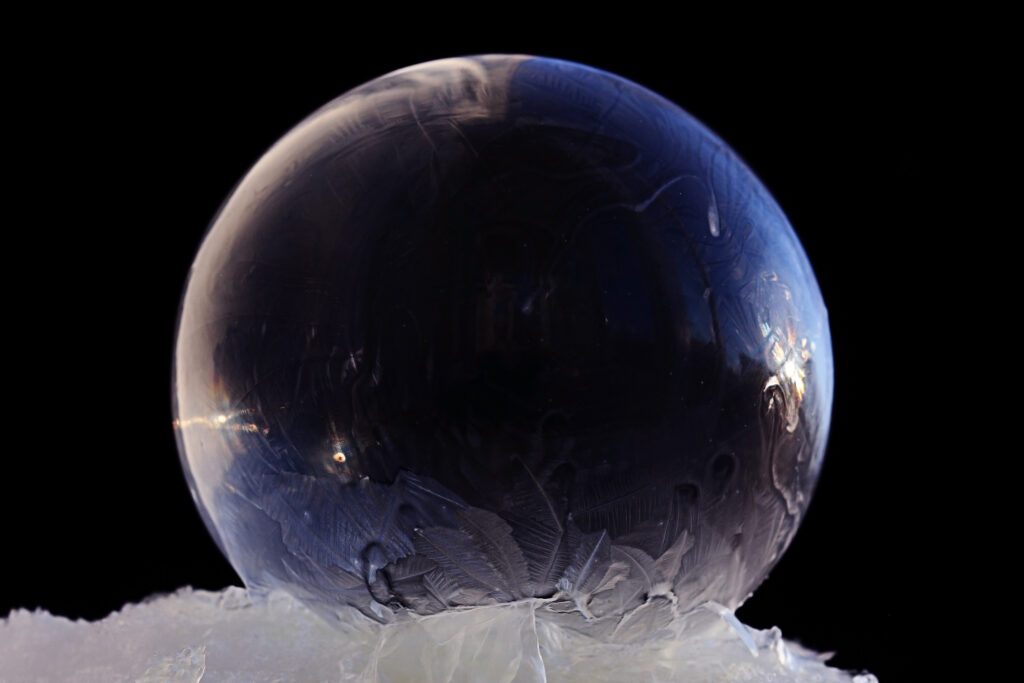Pour a small amount of thick bubble solution into the bottom of the can or onto the plate. If using the can, make sure it is upside down. You don’t need a lot of bubble solution to make this work!
 Tips & Tricks:
Tips & Tricks:

Take bubble fun to the next level by turning a regular soap bubble into a frozen bubble! All you need is bubble solution, a plate, and a freezer. This activity is fun for all ages.
Lleva la diversión de las burbujas a otro nivel a través de la congelación de una burbuja. Lo único que necesitas es solución para hacer burbujas, y un congelador. Este vídeo es divertido para todas las edades.
Every bubble is made of three individual layers: a thin layer of water molecules squished between two layers of soap. When the water in a bubble freezes, you can see ice crystals frozen into the shape of a bubble.